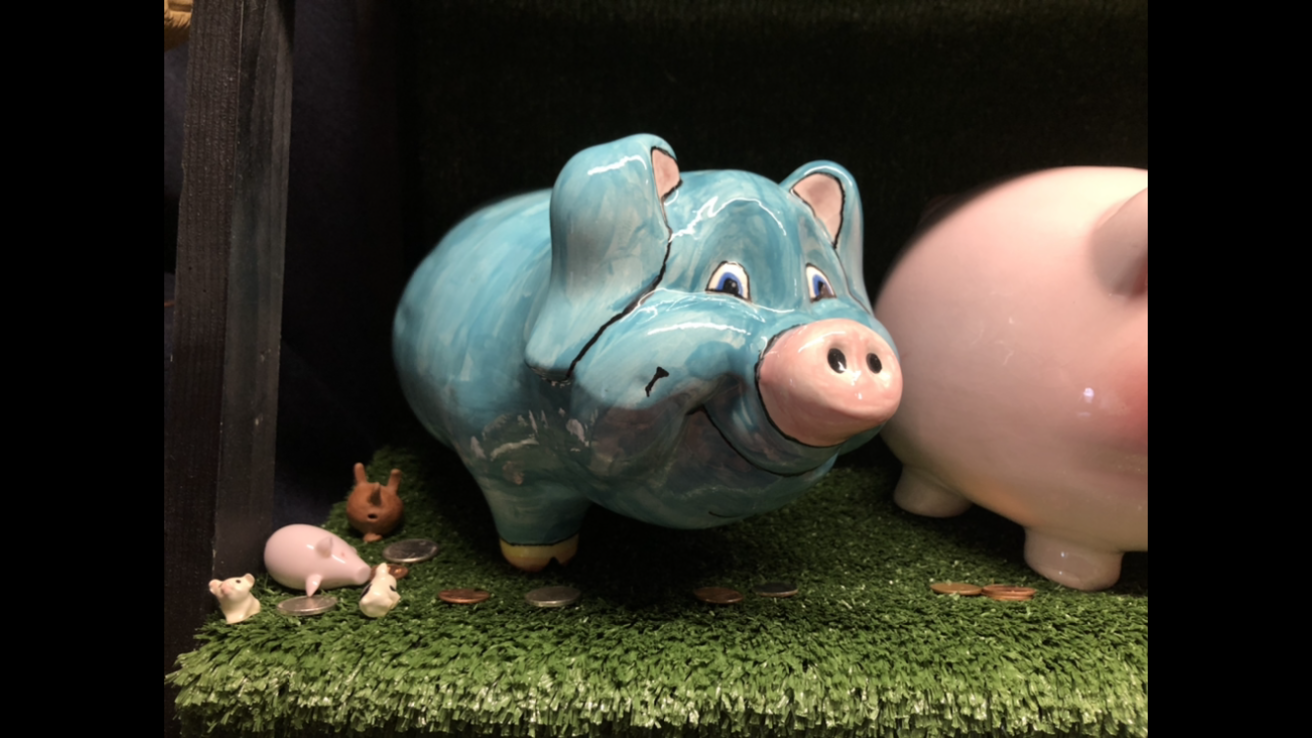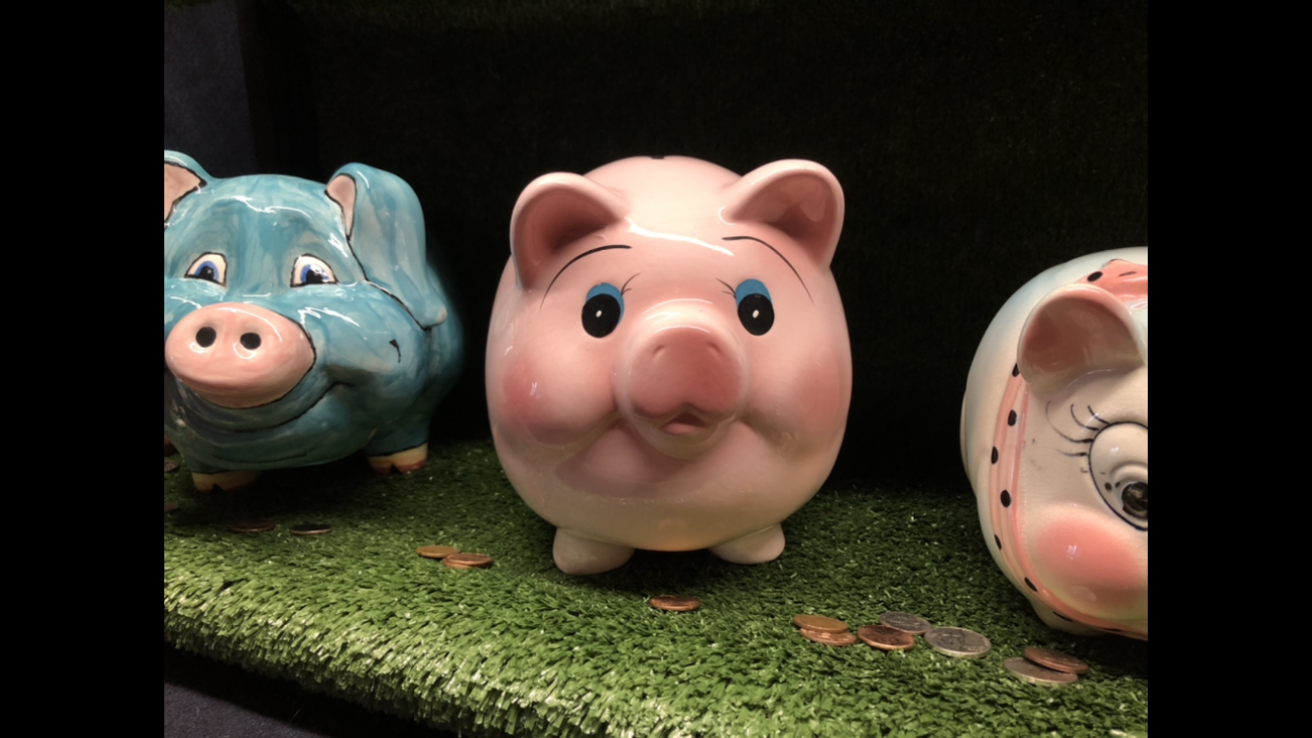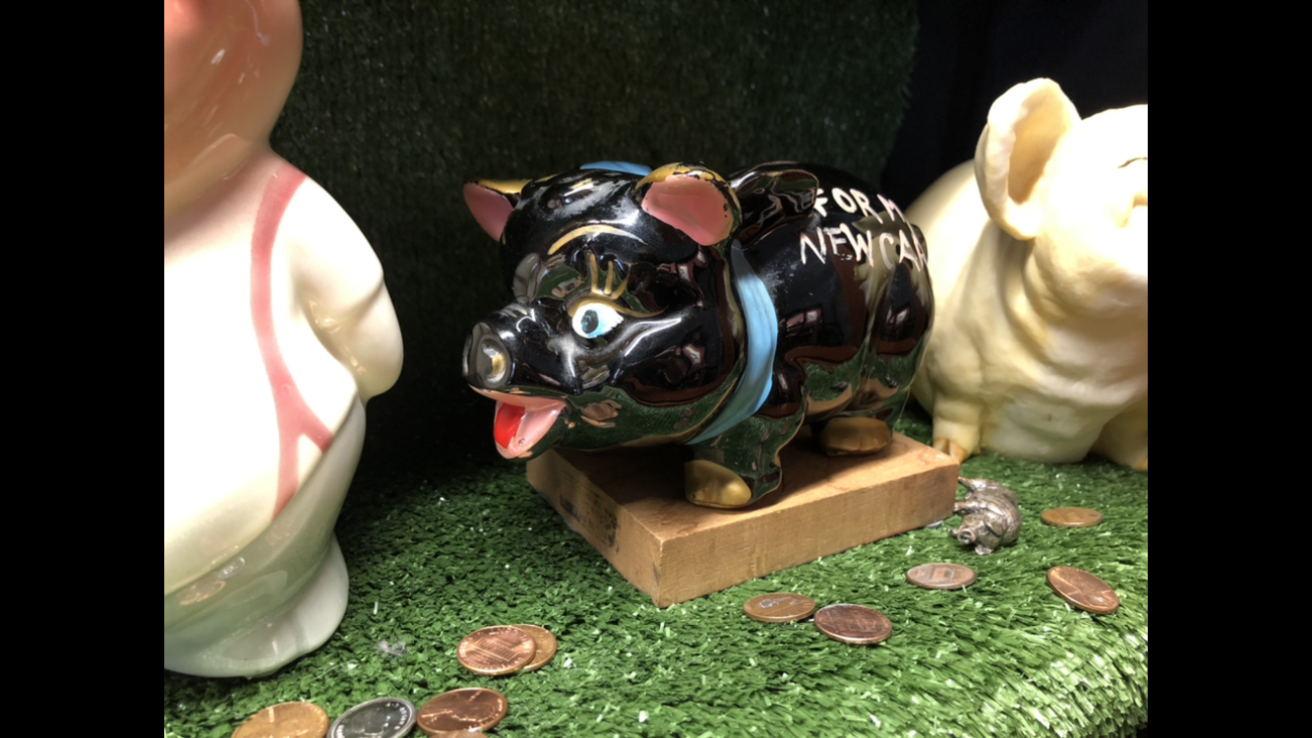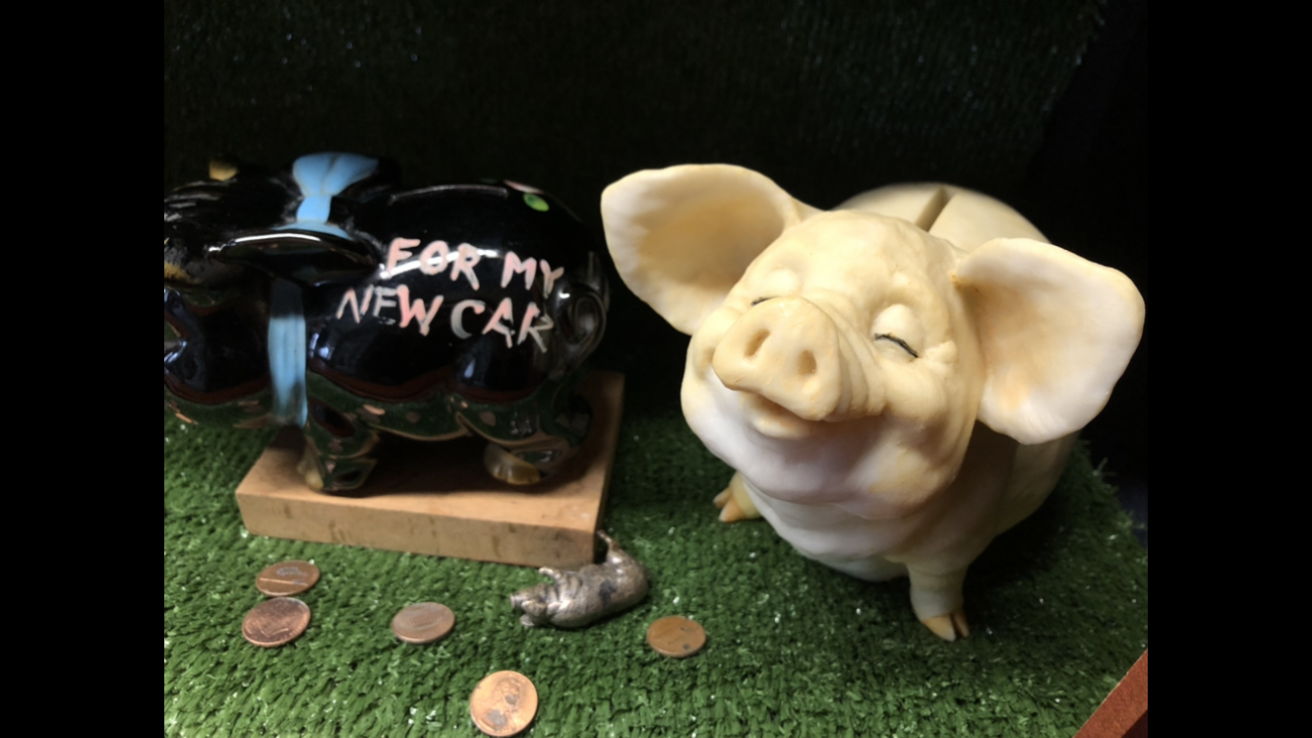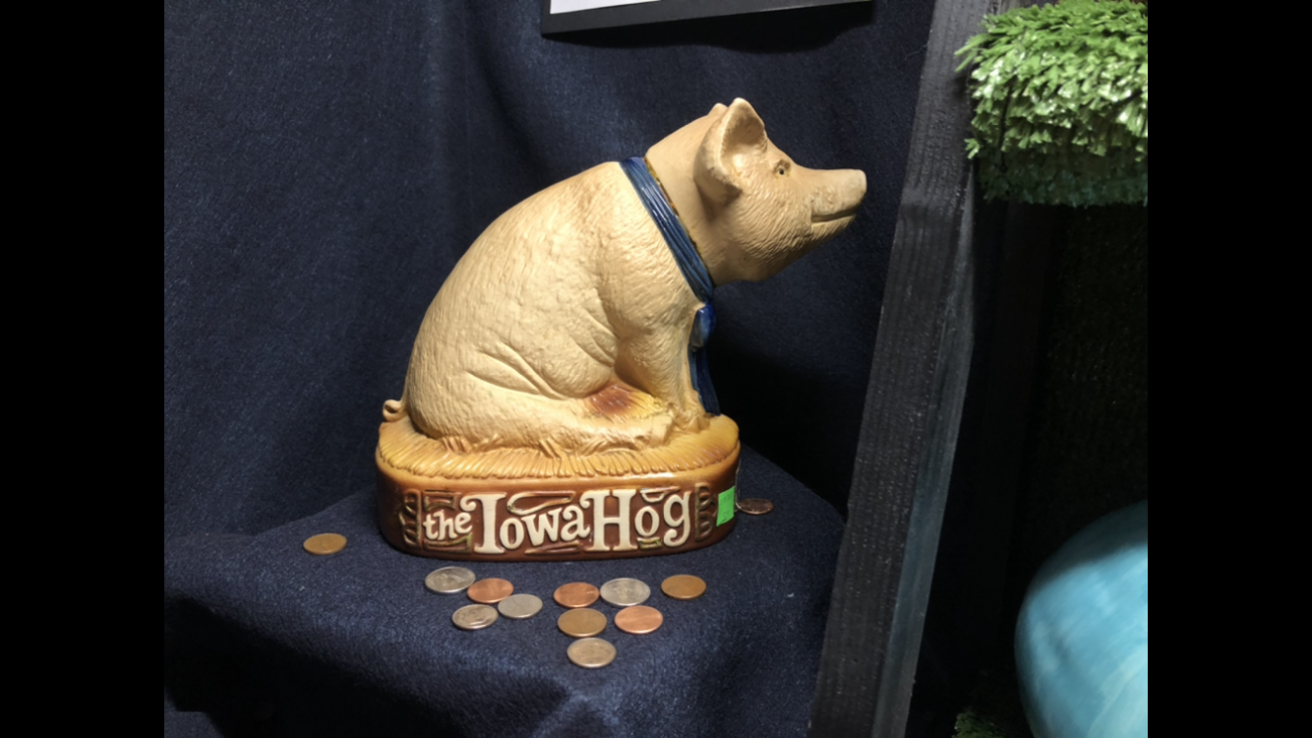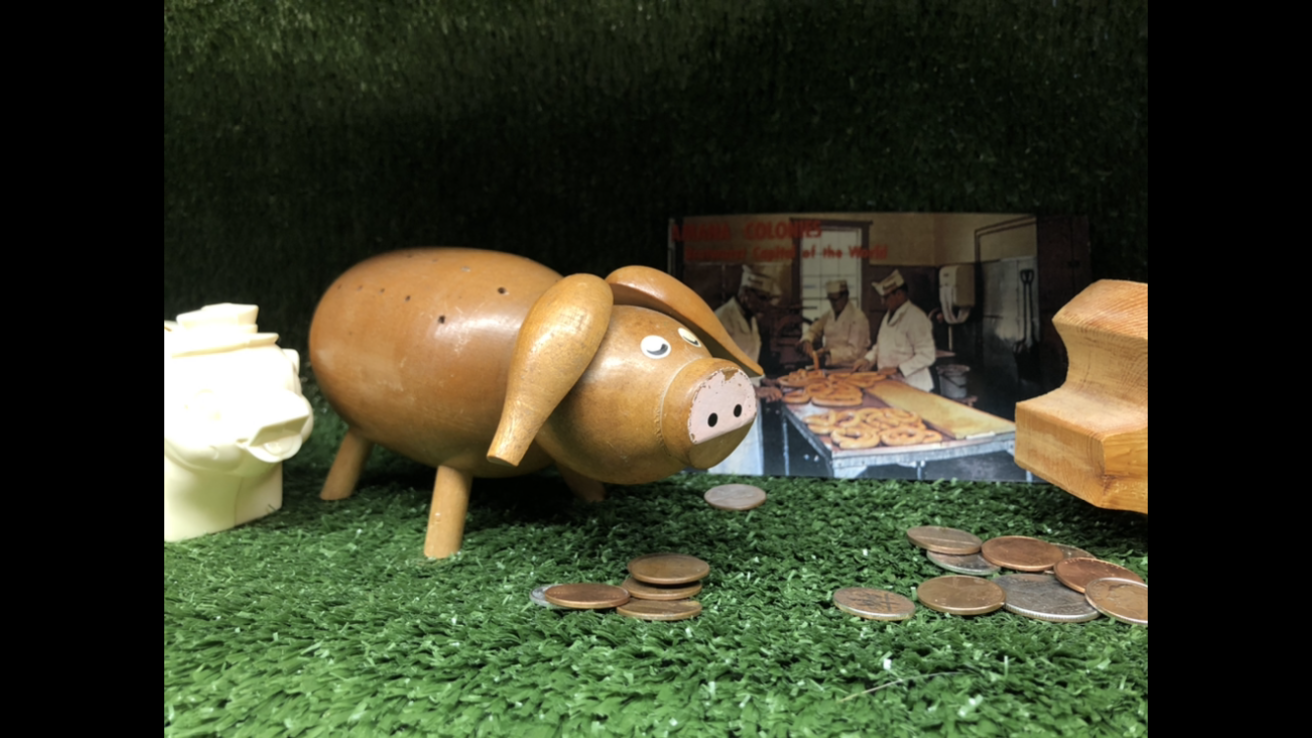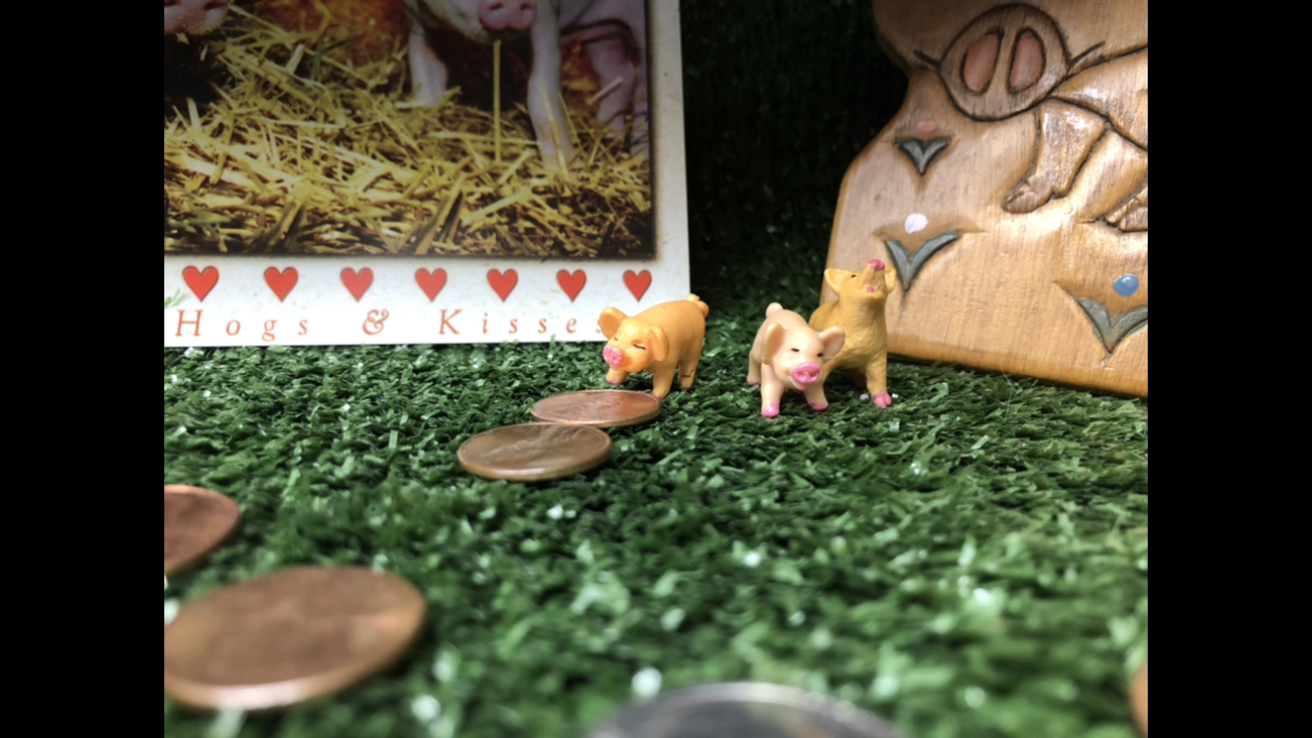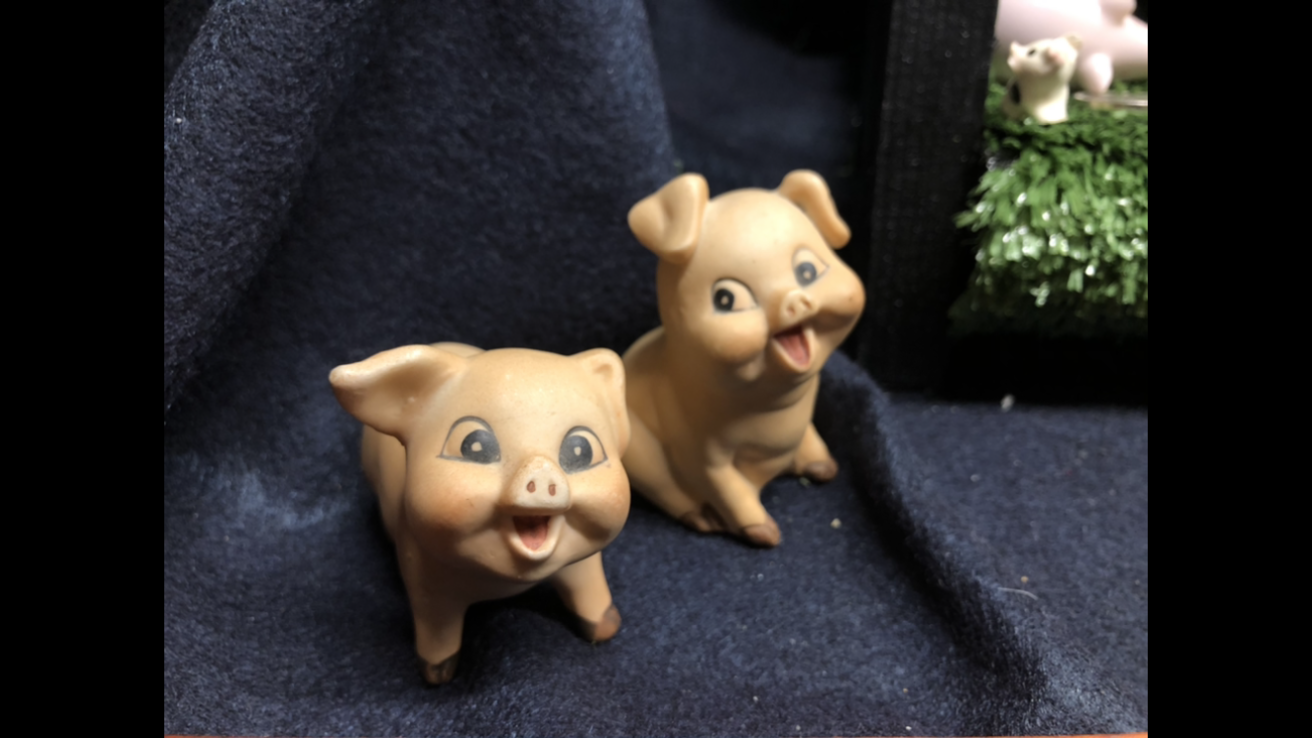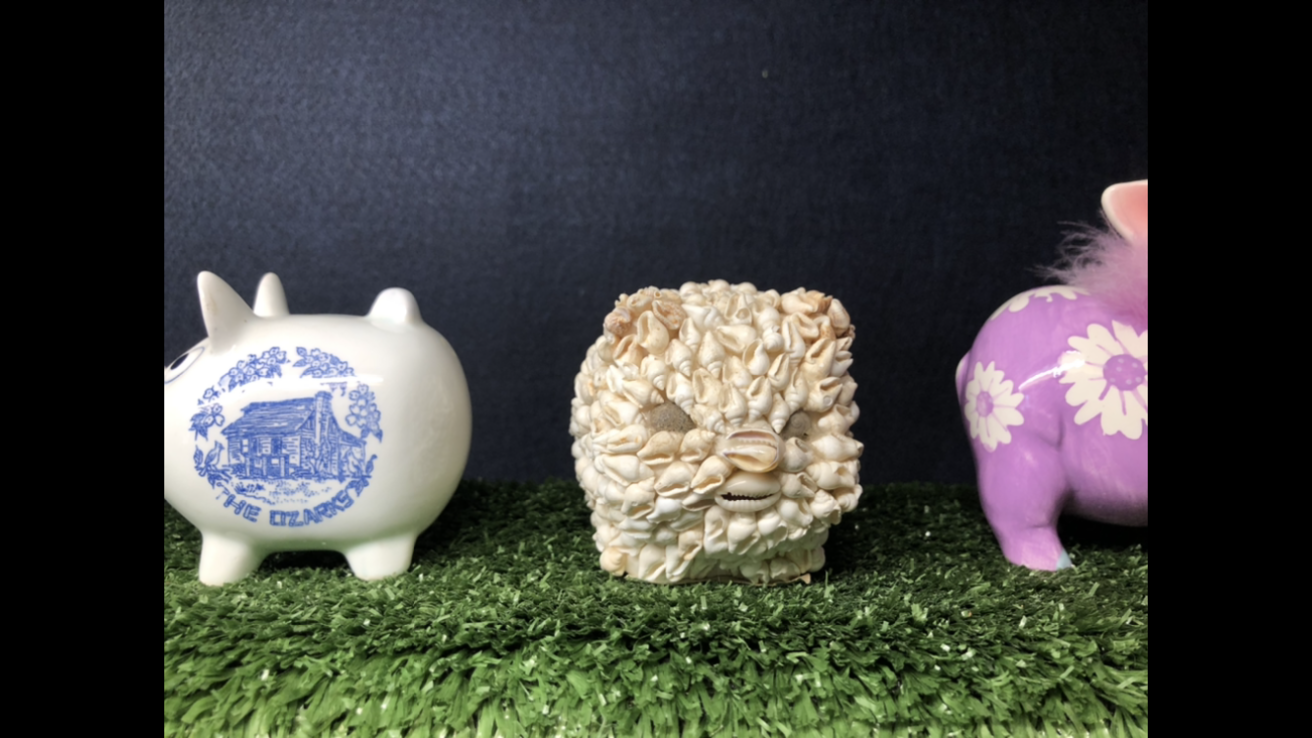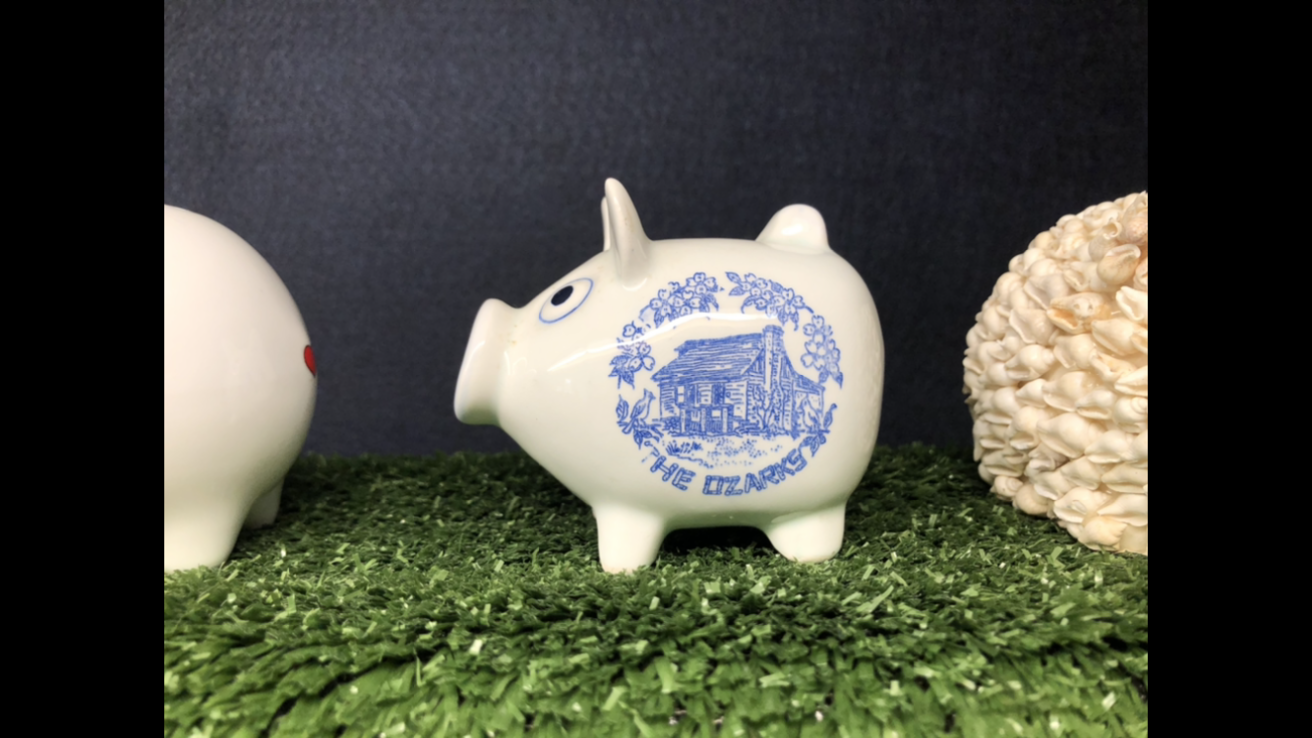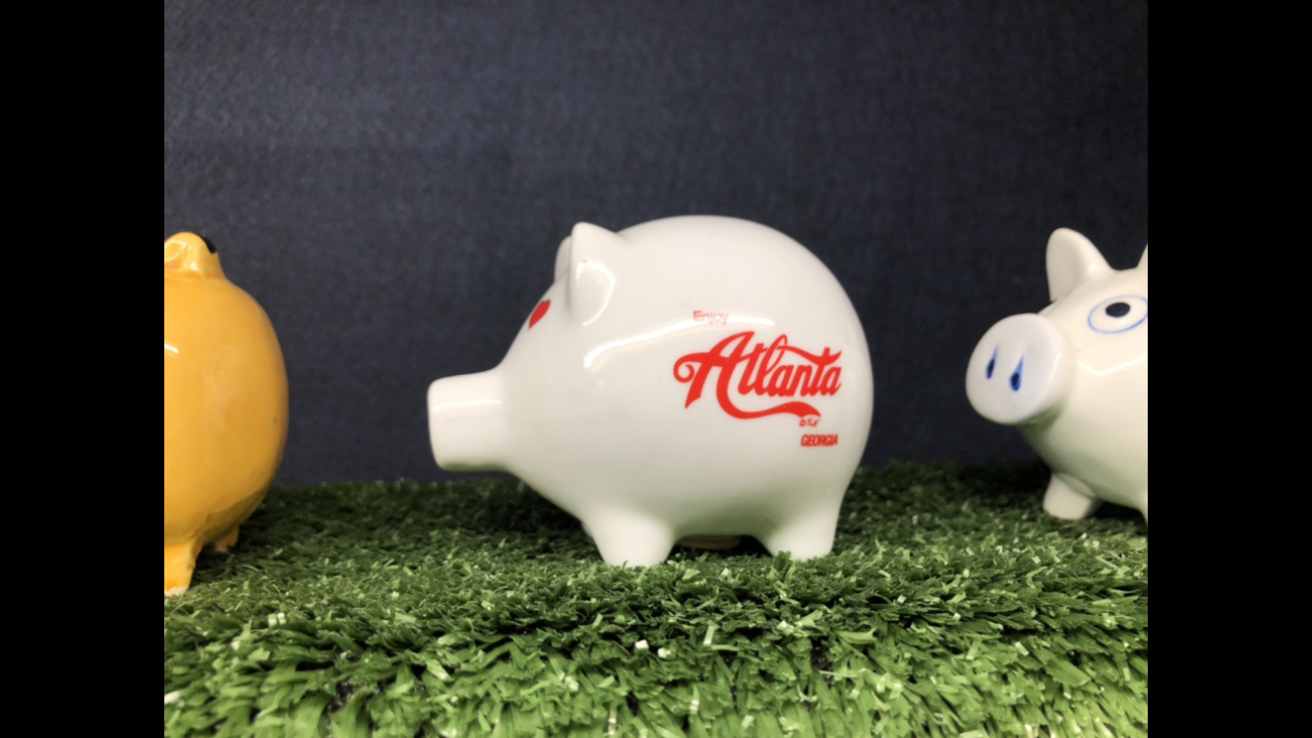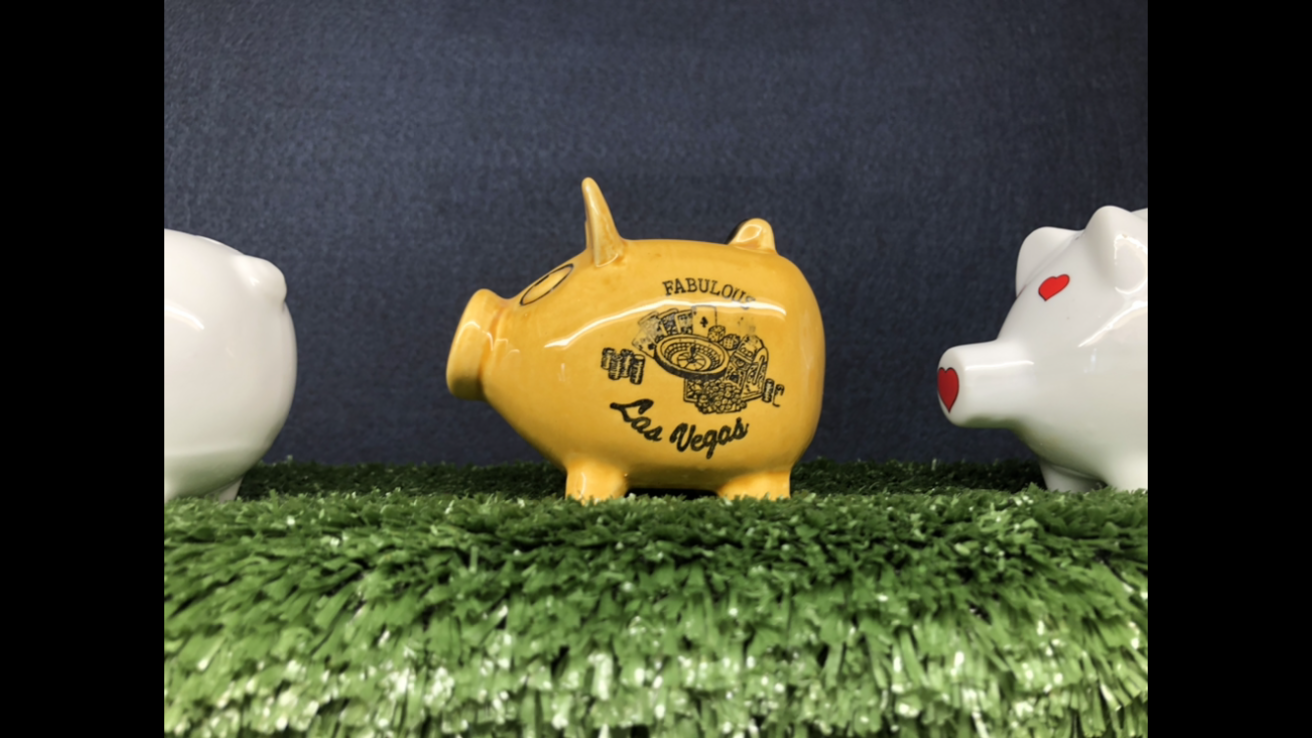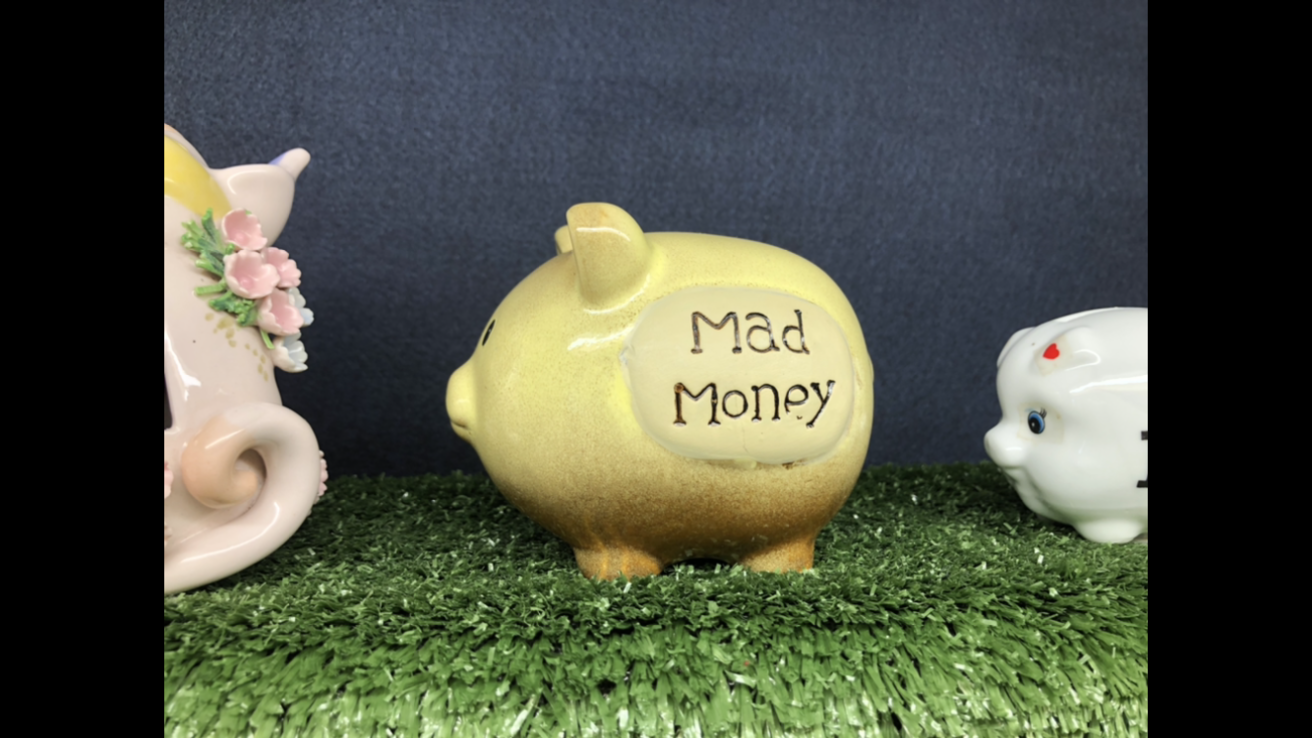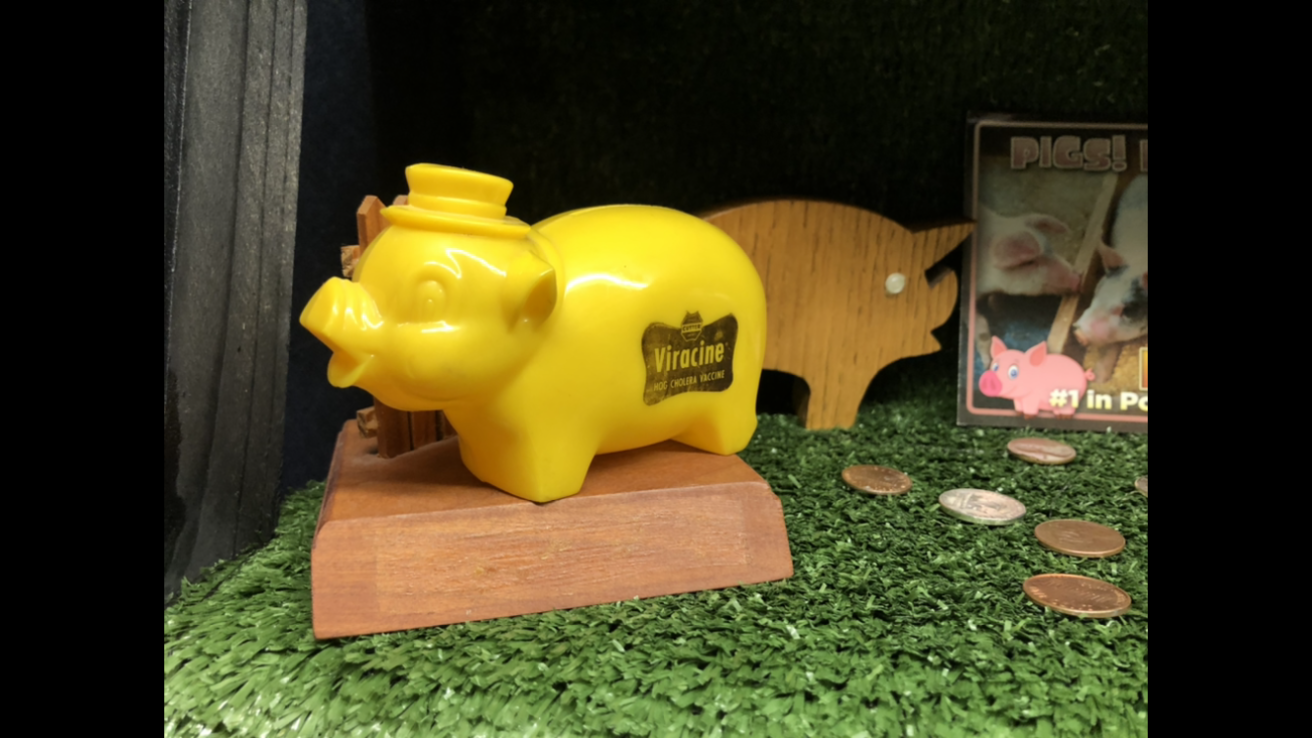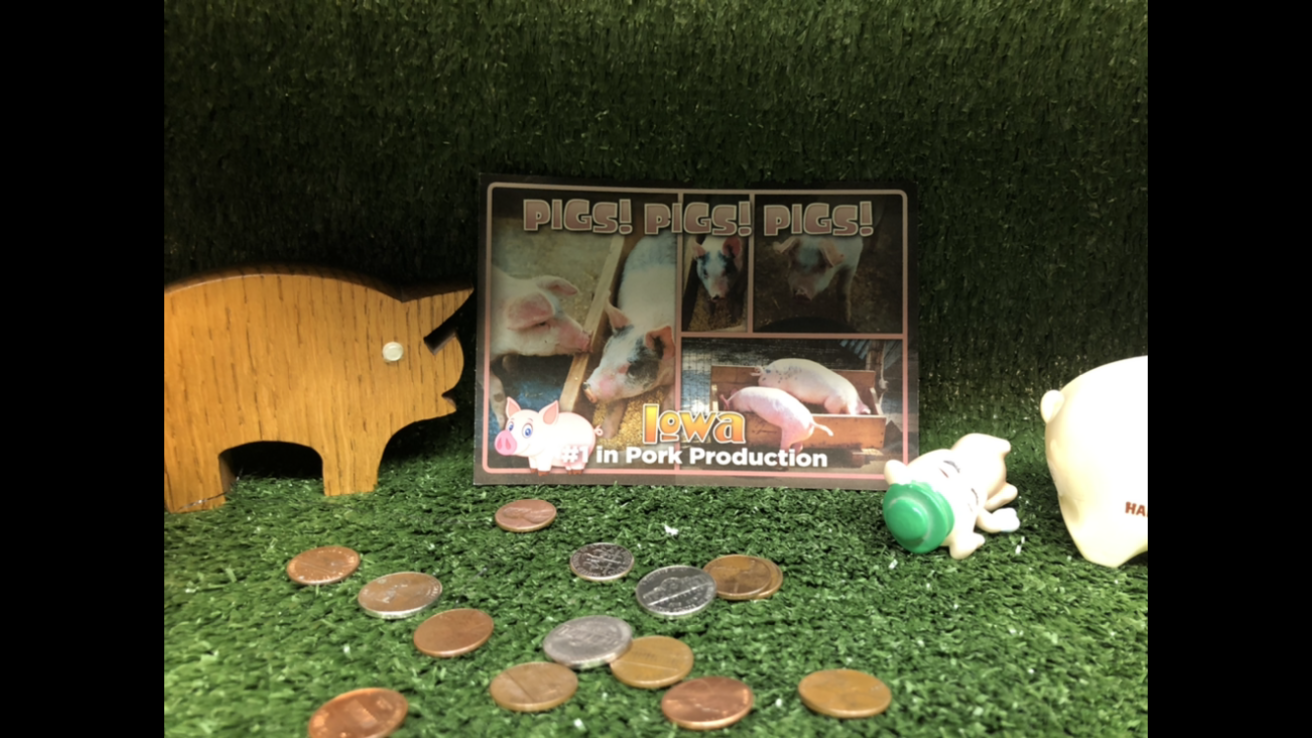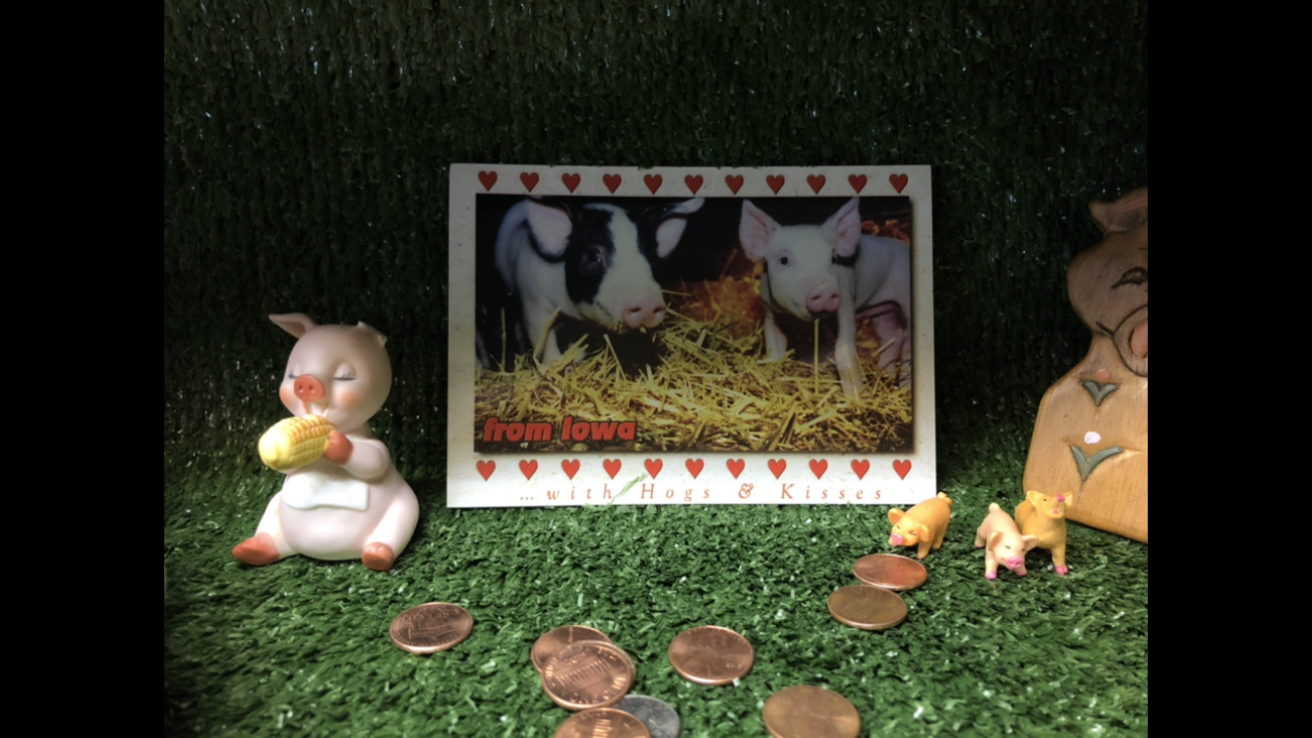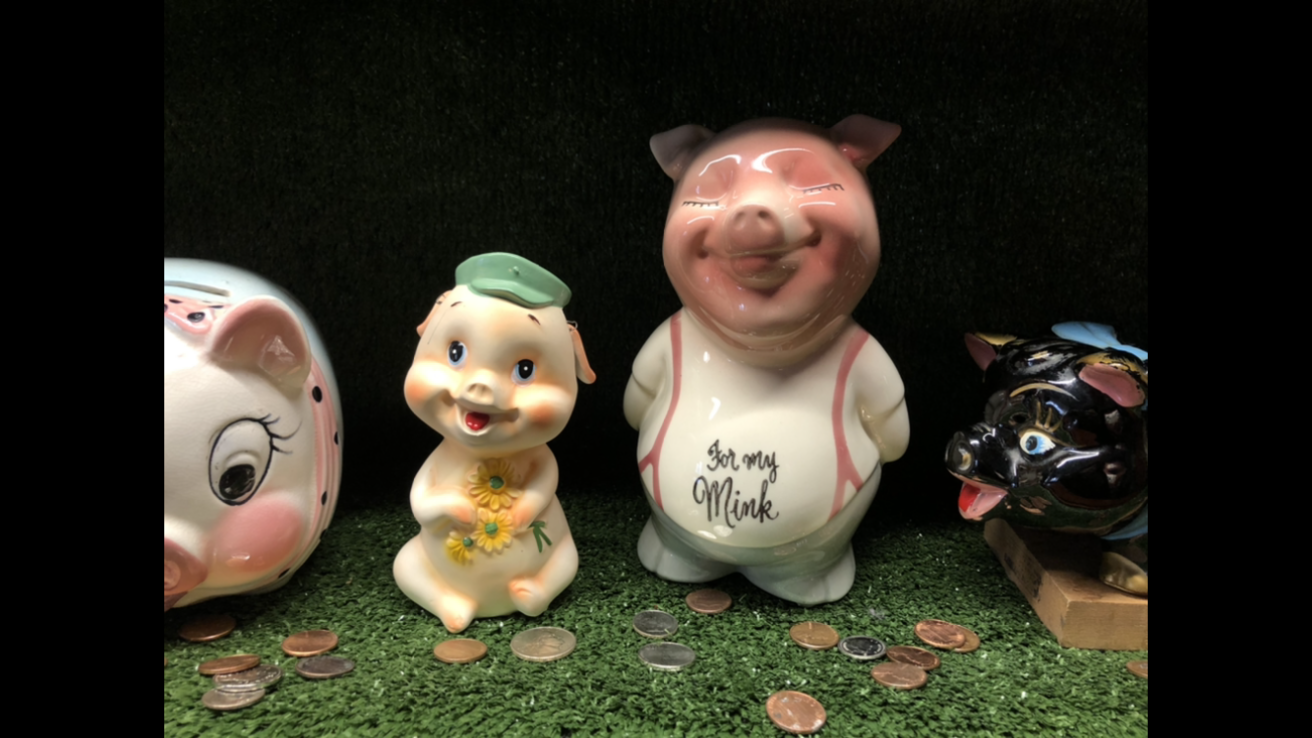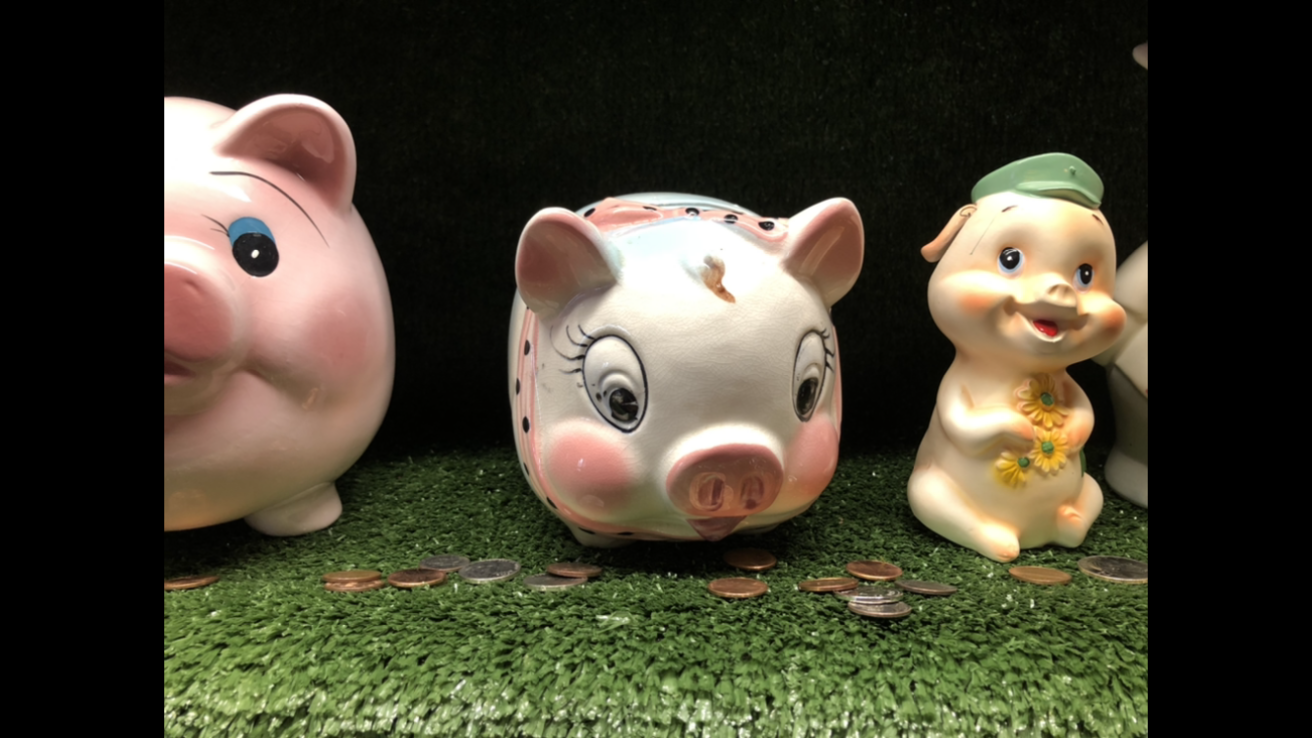Collector: Hallie Abelman, PhD candidate and instructor in American Studies at University of Iowa
Collection Name: Piggy Banks of Iowa
Image Gallery
Collector Statement:
The views and opinions expressed by featured collectors are solely their own and should not be construed as an objective educational exploration by the museum of the themes addressed. The University does not endorse, support, or necessarily share the views exhibited by the collector, but does value individual perspective and creative expression.
"I knew that moving from Brooklyn to Iowa City as a vegan would be a downgrade, at least when it came to eating out. Still, I was excited about tripling the square footage of my living space and paying less money for a cup of coffee. What I did not anticipate, however, was the non-potable drinking water that filters the state’s unsurpassed industrial pork processing factory runoff into our daily tap. So, after settling into a spacious home and filling it with jugs of purified water, my partner and I did what any codependent lesbian couple does when they relocate from an urban mecca to a small midwestern town—we went thrifting. Making our rounds at Iowa City’s impressive secondhand shops brought a sense of community to our small lives working from home in a new place. And as someone whose research focuses on animal-related tchotchkes, it did not take long for my new fixation to settle in. Pre-owned piggy banks stuck out at every secondhand shop I visited, each a constant reminder that I was now a resident of the state that produces the most pork in the nation. I should stress that I don’t collect piggy banks because I think that they’re cute. I collect piggy banks out of utter disdain for what they represent. Last time I checked Iowa farms slaughter upwards of 33 million hogs per year, so the connection between pigs and profit is clear here in Iowa. But to me, piggy banks have always felt like an unfair and misleading representation of pigs. From wolves to bulls and bears, animals have been employed to symbolize aspects of the U.S. fiscal landscape for centuries. And it seems to me like the commodification of pigs into coin banks is rooted more deeply in American financial greed and optimization than anything inherent in the actual animal. Today, as you visit this exhibit, I challenge you to join me in considering what it means to own a piggy bank in a state like Iowa."
Featured collections items:
-
For my mink ceramic piggy bank
-
For my new car small black ceramic piggy bank
-
I <3 NY white small piggy bank
-
Seashell piggy bank small
-
Pink and blu (not for my mink) ceramic round piggy bank
-
All pink large bank
-
Big blue bank ceramic
-
Mad money golden/brown small bank
-
Yellow tourism bank NC
-
Farm plastic blue navy bank with hat
-
Farm yellow plastic bank
-
Farm tan bank plastic
-
Iowa hog (decoration) large ceramic/wood
-
Tan bland large piggy bank ceramic
-
Sitting pig with flowers and green hat (fragile
-
Small pigs 1-2inches x 10 (clay)

